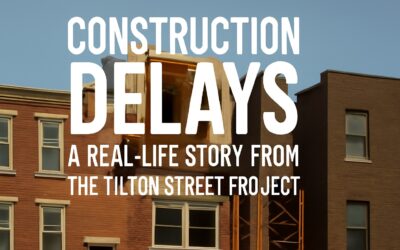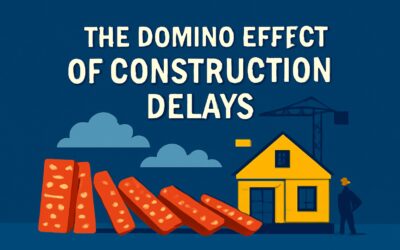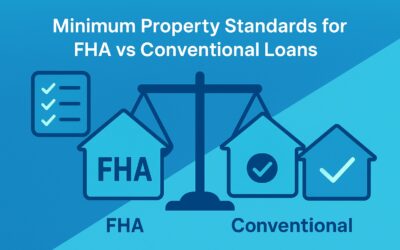“What will my renovation project cost exactly?” It’s a question every homeowner asks, but one that no contractor can answer with certainty upfront, especially when it comes to 203(k) renovations.
Pricing a 203(k) renovation project isn’t as straightforward as most homeowners expect. Unlike standard remodeling jobs, 203(k) projects come with unique challenges that make it difficult to determine an exact cost upfront. Several factors contribute to fluctuating costs, from the unpredictable nature of construction work to logistical complexities.
If you’re considering a 203(k) renovation project in the near future or even far down the road, keep reading!
Scope of Work: Why the Same Task Can Vary in Price
A common question homeowners ask is: Why does the cost of a simple task vary so much depending on the project size? Let’s take window installation as an example. In a full-house renovation, installing a window might cost around $300, while in a smaller project, it could be as high as $700. This isn’t due to contractors overcharging for small jobs, it’s a matter of efficiency and logistics.
- Standalone Tasks Require Extra Work: If a contractor is already working on multiple aspects of a home, they can group tasks efficiently. However, a single-item job requires setting up tools, staging materials, and making extra trips, significantly increasing labor costs.
- Time Loss on Small Jobs: If a contractor is renovating an entire house, installing a window might take just an hour as part of the workflow. But in a small job, they may need to prep, wait for materials, and potentially return for multiple visits, turning a one-hour task into an all-day job.
- Unplanned Trips to the Store: Forgetting to buy a crucial item can mean stopping the job, going to the store, and returning the next day. On a big project, the subcontractors spend time on other tasks while waiting for materials to arrive.
Problems Behind the Walls: Unforeseen Issues
No matter how thorough the initial inspection is, there’s no way to predict every issue that might arise once demolition begins. A major challenge in pricing a 203(k) renovation project is the unknowns. What lies behind walls, under floors, or above ceilings? Until demolition starts, no one can guarantee the condition of structural elements, plumbing, or electrical systems.
Using the window example again:
- If a contractor removes a window and finds the jambs rotted, additional framing and waterproofing may be necessary.
- If electrical wiring isn’t up to code, it must be corrected before continuing the job.
- If hidden mold or termite damage is found, remediation adds unexpected costs.
This is exactly why contingency reserves exist in 203(k) projects, because surprises are inevitable in renovation work. This is a buffer in the budget, typically 10-20% of the total project cost, to account for unforeseen issues that arise during the renovation.
Logistics: How Project Size Affects Costs
Larger renovation projects benefit from economies of scale. When contractors work on multiple aspects of a home, they can streamline work and reduce waste, which lowers overall costs.
- Material Costs Drop for Large Orders: Buying in bulk typically means discounts from suppliers, reducing material expenses.
- Time Efficiency: On a major renovation, workers can move seamlessly between tasks, keeping productivity high. In contrast, for a one-off small job, setup, cleanup, and travel time eat into the budget.
- Travel and Mobilization Costs: Contractors have to factor in the time and expense of getting to a job site. If a contractor is already on-site for a larger project, the cost of an additional task is minimal. However, for a single task, the cost of travel, setup, and teardown gets passed onto the client.
Material Costs and the Challenge of Price Fluctuations
One of the most unpredictable aspects of a 203(k) renovation project is the cost of materials, which can vary significantly over time. If a project takes long, homeowners may end up paying more for materials than originally estimated. This is an issue that contractors and homeowners alike must be prepared to handle.
At first glance, it might seem like a simple solution: Why not just buy all the materials upfront and store them? Unfortunately, it’s not that straightforward. Here’s why:
- Lender Disbursement Process
In a 203(k) project, the lender releases funds in stages as the work progresses. This means contractors don’t have access to the full project budget upfront to purchase all materials at once. The step-by-step payment structure is designed to protect both the lender and the homeowner, but it limits our ability to lock in material costs early.
- Storage Challenges
Even if a homeowner were willing to pay out of pocket to buy materials upfront to avoid price fluctuations, the question becomes: Where do you store them? You can’t store materials in the house being renovated because an unoccupied home under construction is a prime target for theft. Additionally, the space is needed for subcontractors to work efficiently. Cluttering the site with materials would hinder their ability to move freely and complete tasks on schedule.
Material prices are influenced by market conditions, supply chain disruptions, and even seasonal demand. While we can’t control these factors, we can plan for them. That’s why it’s essential to account for the possibility of price fluctuations when pricing a 203(k) renovation project.
We don’t expect material costs to skyrocket on every project, but the possibility exists, and it’s something we must consider.
The Permit and Inspection Process: A Hidden Complexity in Pricing a 203(k) Renovation Project
The permit and inspection process is a major factor that complicates upfront pricing for 203(k) renovations. Every project must comply with local building codes and FHA standards, which means obtaining permits and scheduling inspections at various stages. However, this process is far from predictable. Permit approvals can take weeks due to backlogs, especially in busy areas like Philadelphia, and inspections may reveal unexpected issues that require additional work.
These delays and surprises can extend the project timeline, increase labor costs, and force contractors to adjust the budget mid-project. Since 203(k) loans disburse funds in stages tied to project progress, delays in permits or inspections can also disrupt cash flow, making it even harder to stick to the original estimate. This unpredictability is why contractors must build flexibility into their pricing and clearly communicate the potential for added costs to homeowners.
The Impact of Market Conditions
Market conditions can also influence the cost of a 203(k) renovation. In Philadelphia’s competitive housing market, material and labor costs can fluctuate significantly, impacting the overall project budget.
- Labor Shortages: The construction industry is currently facing a labor shortage, which can drive up labor costs and extend project timelines.
- Supply Chain Disruptions: Global supply chain issues have led to increased material costs and longer lead times for certain products. Contractors must account for these factors when pricing a project.
- Seasonal Variations: Renovation costs can vary depending on the time of year. For example, demand for contractors is typically higher in the spring and summer, which can lead to higher labor costs.
The Hidden Cost of Time
Time is one of the most significant and often underestimated cost drivers in 203(k) renovations. Delays can arise from a variety of sources: unforeseen structural issues, prolonged permit approvals, supply chain disruptions, or even failed inspections. Each of these challenges, as outlined earlier, can extend the project timeline, leading to increased labor costs, higher material prices, and additional overhead expenses. For example, if a project is delayed by weeks due to permit backlogs or unexpected repairs, contractors may need to pay workers for extra hours or reschedule subcontractors, all of which add to the budget.
Moreover, the longer a project takes, the greater the risk of price fluctuations for materials or changes in building codes that require additional work. These delays not only strain the budget but also disrupt the carefully planned disbursement schedule of the 203(k) loan, which ties payments to project milestones.
Final Thoughts
Homeowners often wonder why contractors hesitate to give a fixed price upfront for a 203(k) project. The reality is that no one can predict every issue that will arise in a renovation. Unknown conditions, job logistics, and the way small projects impact efficiency all play a role in cost variation. This is why 203(k) projects include contingency reserves and require careful planning to adapt to unexpected conditions.
A well-managed 203(k) project is about balancing cost control with flexibility, ensuring the renovation is done correctly without unexpected financial strain. By building flexibility into the timeline and budget, we can better manage these risks and keep the project on track.
If you are looking for a 203(k) renovation service with low risks of delays and cost overruns in Philadelphia and South Jersey, Contact us Today!

![Philadelphia Sump Pump Installation Requirements [2025 Guide]](https://matrixgc.com/wp-content/uploads/2025/06/Philadelphia-Sump-Pump-Installation-Requirements-2025-Guide.png)






0 Comments